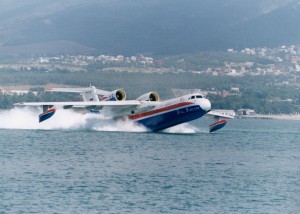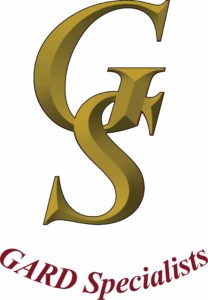By Tony Morris
Founder & Communications Director
Wildfire Research Network (WRN)
The Beriev Be-200
There is a de facto crisis in U.S. Aerial Firefighting . The need to implement solutions to the crisis could not be more urgent. The lives of millions of Americans living in wildland urban interface communities are at risk.
Topanga is a particularly vulnerable to wildfires . In 1959 a wildfire destroyed 75 homes in the Fernwood neighborhood where we live. Looking ahead to the coming “wildfire season” in 2013 there is a real concern about wildfires that could burn here,and many other areas across the nation that have long been primary residences for a cross section of America..
With the recent demise of Aero Union and the grounding of its seven workhorse Lockheed P-3s the U.S has lost an important component of its Large Air Tanker (LAT) fleet.
This is why the Beriev Be-200 twin-jet 3000-gallon water-scooping LAT is so important as a firefighting aircraft. Already approved to operate by the European Aviation Safety Agency (EASA), the Be-200 is needed in the U.S. to fight wildfires which occur with ever alarming frequency and size in the U.S.
The Be-200 will be making another trip to Santa Maria Airport this Spring. It will provide an excellent opportunity for the media and potential operators to see the aircraft up close.
With the smallest number of Large Air Tankers since 2002 when 44 LATs were grounded for six months following the fatal crash of two air tankers, the U.S. Forest Service Fire & Aviation Management (FAM) has a critical need for additional LATs.
It is well know by observers writing about FAM that the USFS preference for a new purpose-built LAT is the Lockheed C-130J-30 with the MAFFS II long term
retardant delivery system. Even with funding secured to purchase a fleet of 15 new C-130 J-30 model aircraft it would require three years for the C-130J-30 to be delivered with a certified retardant delivery system from the assembly line.
Once FAA Certified and Interagency Air Tanker Board approved the Be-200 can be deployed as a firefighting aircraft with minimal delay as compared with the Lockheed C-130J-30 with MAFFS II which is currently not being manufactured. Each aircraft costs approximately $88 million whereas the Be-200 will be leased by FAM from International Emergency Services.
The productivity rate of a B2-200 – Initial Attack, scooping water and dropping water mixed with Gel such as FireIce, or dropping long-term retardant loaded from Air Attack Bases, makes the Be-200 a flexible firefighting aircraft.
As for the aircraft’s use in different parts of the U.S. there are adequate water sources – oceans, reservoirs, and rivers which provide the Be-200 with accessible scooping access.
With its principle use being water scooping the Be-200 can knock down wildfires before they burn out of control. The purpose-built water scooper will provide a measure of safety that can mean the difference between a small fire and an out of control conflagration. When retardant is preferred the Be-200 will handle it.
PRODUCTION OF THE BE-200
As more orders are received by Beriev Aircraft changes and improvements for the aircraft’s operational system can be made, making the Be-200 a superior water scooping or retardant airtanker. A number of Be-200 pilots, engineers, and
aviation experts continue to help further develop its capabilities
I am informed by the office of the Defense Attaché at the French Embassy in Washington D.C. that a possible official announcement regarding Frances’s decision to purchase a number of Be-200s is expected in the near future.
BE-200 DEPLOYMENT IN SOUTHERN CALIFORNIA
The Be-200 will be a very effective Large Air Tanker with retardant loaded at Air Attack Bases throughout Southern California and North America, or it can scoop from water sources which include the Pacific Ocean. With millions of Californians living within 10 miles of the Pacific or other suitable water sources, the Be-200 can scoop and repeatedly drop on a wildfire when it is small, before it burns out of control.
This aerial firefighting “tool in the toolbox” needs to deployed. There is a demonstrable need for additional Large Air Tankers. It is also prudent to include a mix of aircraft types. Scooping aircraft should play a role in U.S. Aerial Firefighting as they already do in the countries of Europe.
Contact the author at: [email protected]













Speak Your Mind
You must be logged in to post a comment.